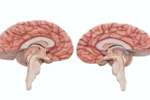The spine is arguably one of the most important parts of your skeletal structure. It’s the part of your body that protects the spinal cord and supports the body’s weight. Made up of a series of small bones stacked on top of each other with discs in between to absorb shock, it’s crucial to your health and well being to take care of it. One type of change you may see in your spine as you age is a condition called spinal stenosis.
Spinal stenosis typically affects people as they age, with most cases being in those above age 50. It is a condition that is caused when there isn’t enough space for all of the nerves that run through the spinal canal. Doctors have identified that this lack of space for the nerves in the spinal canal is caused by a number of factors. The most common causes of spinal stenosis include overgrowth of bone that grow into the spinal canal, herniated disks, thickened ligaments, tumors, or spinal injuries resulting from car accidents or other major trauma.
How Is Spinal Stenosis Diagnosed?
The most common symptoms of spinal stenosis include radiating pain into one or both legs, pain and cramping in lower extremities when walking, pain in the extremities that is relieved with sitting or bending forward, and weakness or numbness in the lower extremities. If you have recently experienced any of those symptoms, it’s important to visit NewSouth NeuroSpine for an exam and diagnosis. A diagnosis of spinal stenosis is made through a physical exam and diagnostic test like an MRI, as well as an understanding of symptoms and patient's health and history.
Can Spinal Stenosis Be Treated?
At NewSouth NeuroSpine, we approach treatment of spinal stenosis with nonoperative management first. We usually suggest an adjustment in activities, weight loss if needed, and appropriate exercise for your age and condition. The next step includes physical therapy and spinal intervention. If after those treatments are exhausted you’re still experiencing pain or discomfort, there are surgical options that may be explored, including one that would decompress the spine or unpinch the nerves.
The first step toward relief of symptoms is an appropriate diagnosis. NewSouth NeuroSpine can provide that as well as all needed services from that point forward. Don’t live with unneeded pain—make an appointment today!





